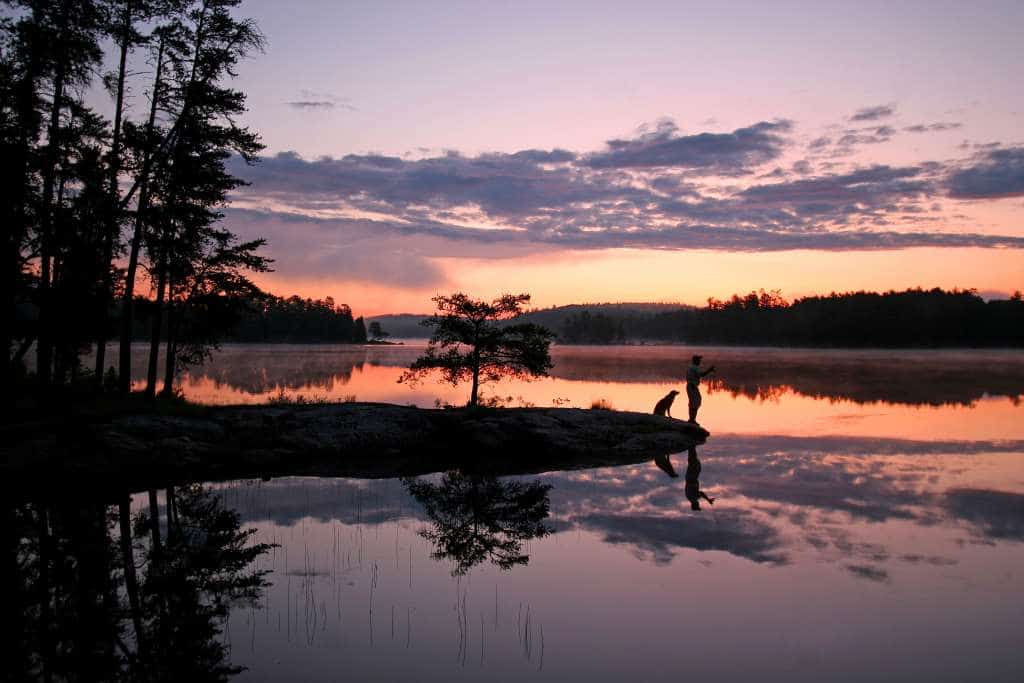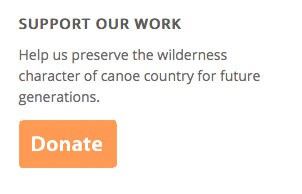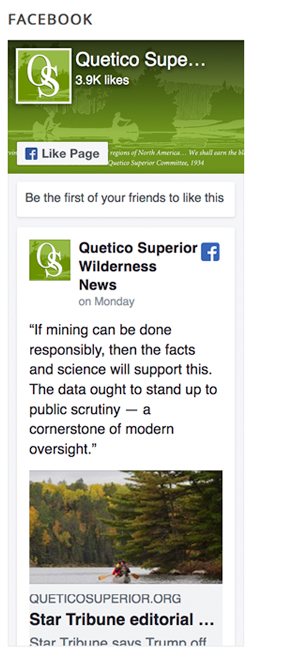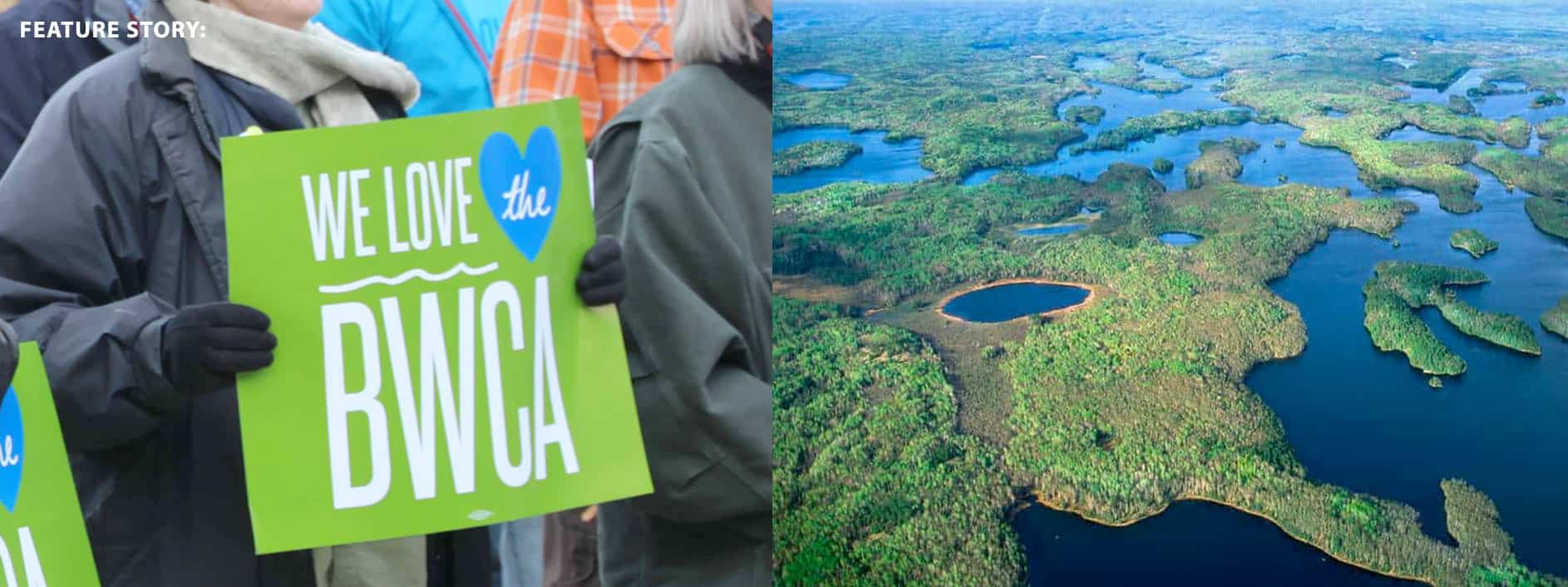
by Alissa Johnson
Before President Obama left office, the political tide seemed to favor the protection of the Boundary Waters Canoe Area Wilderness (BWCAW) watershed from proposed sulfide-ore copper mining. Since then, developments on the national stage have raised fears that the tide has turned. Yet it can be challenging to stay on top of each development and make sense of what it all means for the future of mining and the Boundary Waters.
Quetico Superior Wilderness News caught up with Becky Rom, volunteer national chair of the Campaign to Save the Boundary Waters, to make sense of the situation. She has been heavily involved in the fight against sulfide-ore copper mining near the Boundary Waters and offered some key insights into the current political landscape.
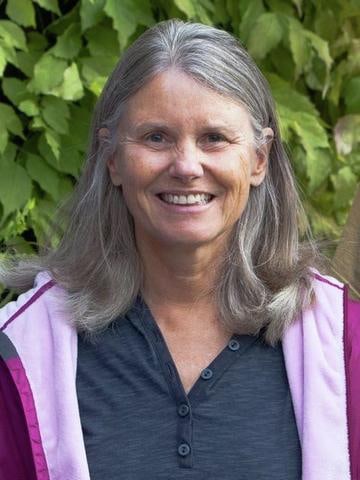
Wilderness News: What do recent developments say about the future of proposed mining in the Boundary Waters watershed?
Rom: There have been three developments that we’re following with the Trump administration. The first was a presidential order on December 20th that called for a critical minerals survey. The administration claims to want to make the United States independent of all other countries and rely on mineral development in the United States for what are called critical minerals. Copper is not on the list, but the Duluth complex [a regional rock formation in the Boundary Waters region] has 10 or 11 or more of these minerals in trace amounts, and so that is a concerning message.
On December 22nd the U.S. Department of the Interior (DOI) posted a legal opinion written by the new DOI Principal Deputy Solicitor reversing longstanding, bipartisan interpretations of mining law. The new opinion reinstated two expired mineral leases in favor of Twin Metals, a subsidiary of [Chilean mining group] Antofagasta. Requests to renew these leases had been denied under the Obama administration. The opinion was issued without consultation with the Forest Service and concluded that Twin Metals had a non-discretionary right to a renewal. The new opinion contradicts the Reagan administration’s 1986 legal opinion and the Obama administration’s 2016 legal opinion that the renewal of the leases was clearly discretionary.
The third development came on January 26th, when the Forest Service announced a change in the scope of its study on mineral withdrawal from an EIS [Environmental Impact Statement] to a less stringent EA [Environmental Analysis].
Although these developments appear to send a political signal that the Trump administration is less interested in protecting the Boundary Waters and more interested in mining on public lands, it is notable that the two-year moratorium on mining in the region was left in place. Under federal regulations that moratorium could have been removed on day one of the Trump administration. And the administration is continuing a study of a proposal that 234,328 acres of Forest Service lands be removed from the mining program.
Because the moratorium is in place and the study continues, there is still an opportunity to protect the Boundary Waters from copper mining.
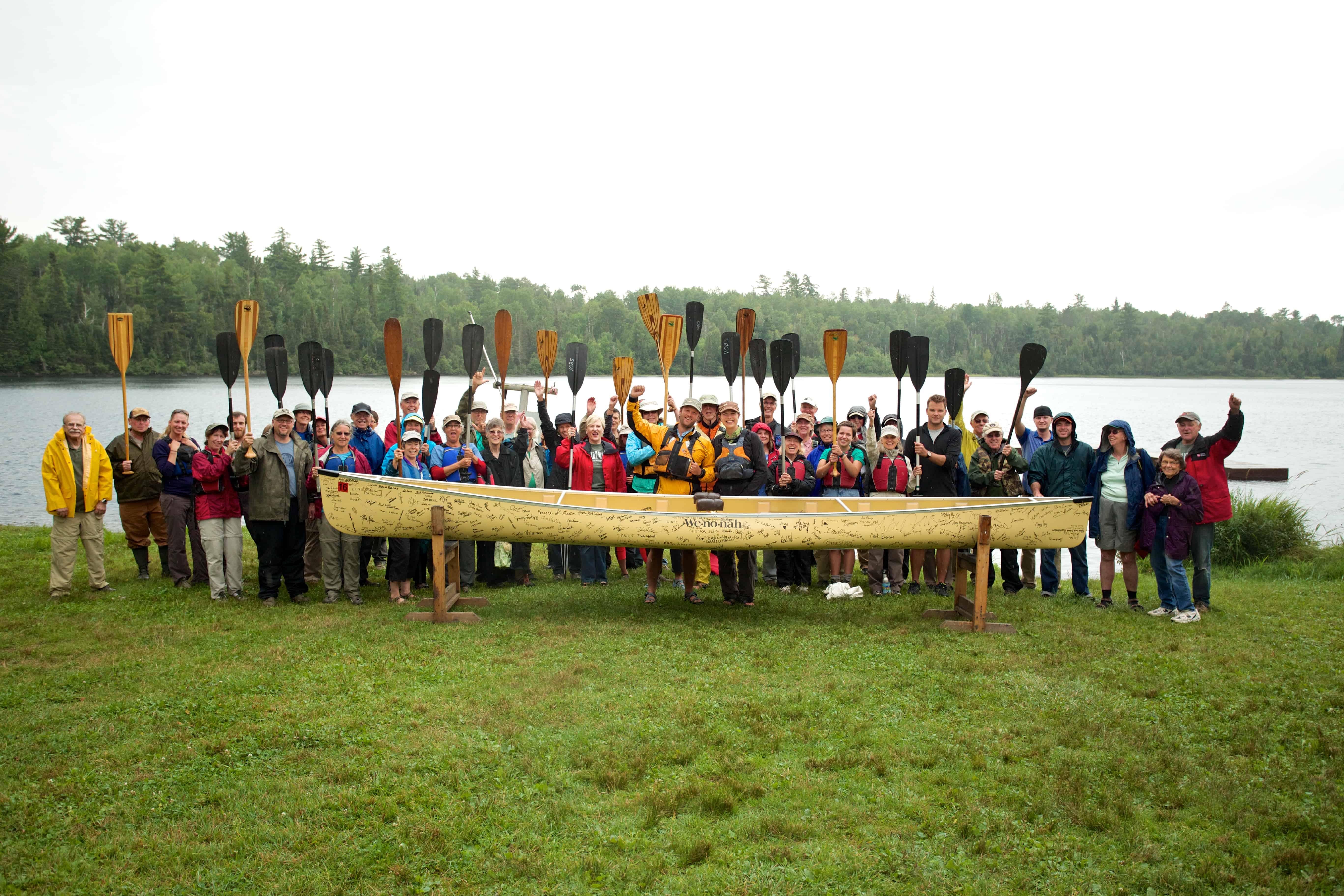

Wilderness News: How is the Campaign planning to respond to these developments?
Rom: First, we are encouraging the public to fully participate in the ongoing Forest Service study of the devastating impacts sulfide-ore copper would have on the Boundary Waters. The Forest Service is taking comments on the study through February 28th. We are also encouraging Boundary Waters supporters to sign a petition posted on the website of the Campaign to Save the Boundary Waters (www.SavetheBoundaryWaters.org). The petition urges a rigorous science-based analysis and requests that the Forest Service make a strong recommendation to the Interior Department to ban mining on Superior National Forest lands in the watershed for the maximum period, which is 20 years.
Second, we plan to commence a court challenge to the new legal opinion. We believe the [Department of the Interior] opinion is an attempt to circumvent the laws that establish Forest Service authority over its national forests and the laws that require stringent environmental review of mineral leases and renewals when national wilderness areas and national parks are threatened.
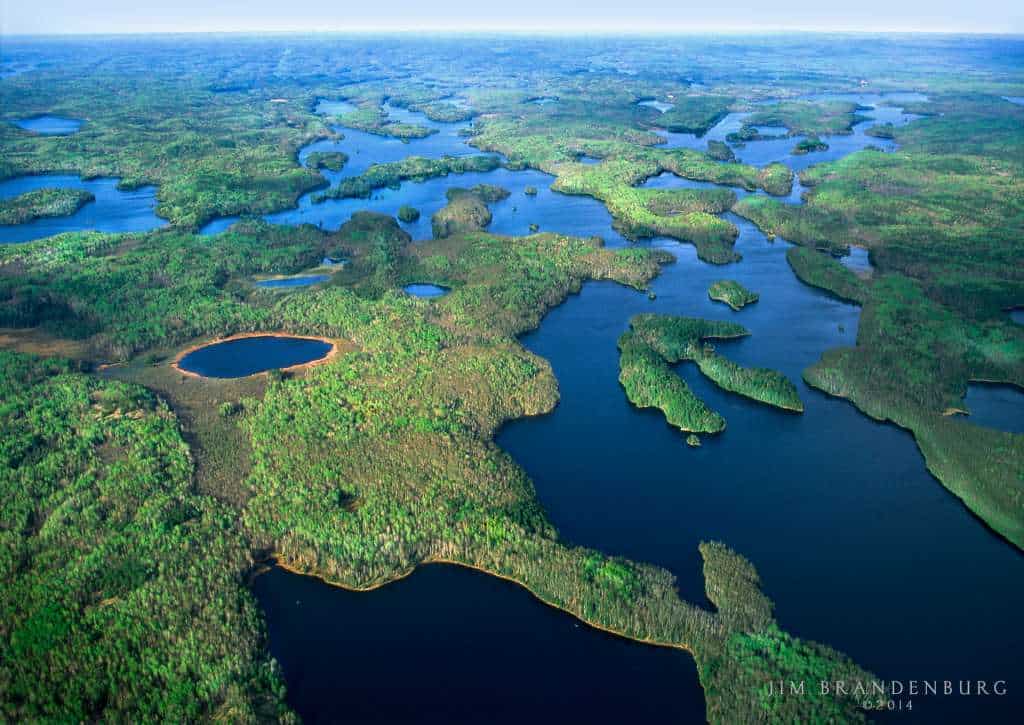
Wilderness News: Is there still reason to hope that mining can be prevented within the Boundary Waters watershed?
Rom: Our work is harder and more challenging now, but to answer your question, is there hope? The answer is yes.
As of right now, no copper mining is allowed on federal public lands in the watershed of the Boundary Waters. And there are opportunities for people to participate in existing processes, to weigh in, to urge that the ban be extended for 20 years.
As long as the bedrock environmental laws passed in the 1960s and ’70s remain in place, the American people have a say in what happens to public lands. There is hope as long as people make it loud and clear to their elected representatives that the Boundary Waters is too precious, too valuable, and too important to risk copper sulfide mining in the headwaters of the wilderness.
Wilderness News: What are the best ways for people to weigh in on the debate?
Rom: The Boundary Waters faces the greatest threat in our generation, and environmental laws are under attack too, so I encourage people to remain focused and committed to protect really important places like the Boundary Waters and elect people who share their values. Voting for candidates who pledge to protect the Boundary Waters should be a high priority.
Second, participate in the two-year Forest Service study. The Forest Service has now provided the public with 30 days to comment on the decision to do an EA instead of an EIS and to recommend important issues to be analyzed.
The Campaign to Save the Boundary Waters and its partner organizations provide guidance and opportunities for engagement. The Campaign is an umbrella coalition representing 300 organizations, including businesses. We reach about 18 million people through all our partners and have members all around the world—it takes that level of engagement to have a positive influence.
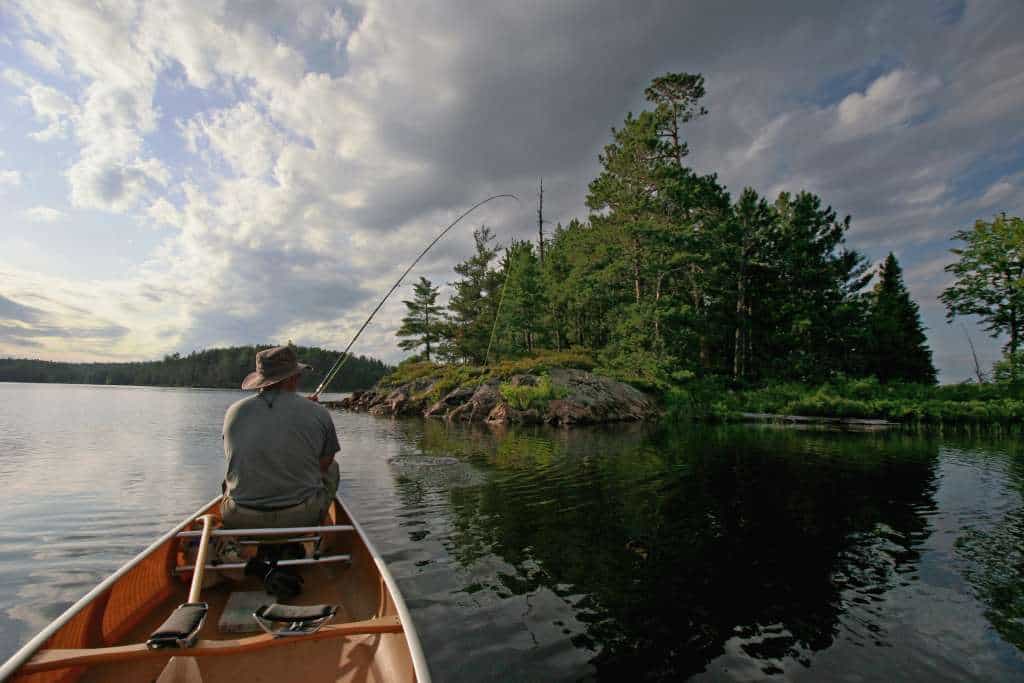
Wilderness News: So it sounds like this is not just a Minnesota issue, for only Minnesotans to address.
Rom: That is absolutely true. The Boundary Waters is a national wilderness area that belongs to everybody in the country. We all own this land. We all have a say. And without people from around the country, we will have a hard time protecting the Boundary Waters.
When Representative Tom Emmer introduced a bill to grant mineral leases for the Twin Metals mine proposal, we were able to contact supporters in congressional districts around the US. We had two and half days when Congress was in session to try to win this vote. We lost 216 to 204; notably 22 Republicans voted against the bill. That was the largest opposition vote to any bill passed out of the House Natural Resources Committee in this Congress. We lost the vote in the House of Representatives, but we showed the Senate that this was a very controversial measure.
If we’d had another week we might have actually won the vote, so to your point it requires all of us. And another important consideration is this: the people who care about the Boundary Waters are from all walks of life, of all political persuasions, and from across the country. This isn’t a short-term effort but a long-term effort to build a resilient base of support for the Boundary Waters, a strong and diverse coalition that crosses all political points of view.
The wonderful thing about the Boundary Waters is that when you are on a canoe trip, that’s who you see. It’s unlike any other wilderness in America in that it’s heavily used by different people, a loyal base of people who are so touched and moved by this wilderness area. We have to figure out how to reach all of them.
Wilderness News: How do you personally remain hopeful as you work on this issue and advocate for wilderness protection from mining?
Rom: Deep down, I can’t believe Americans would let this happen to the Boundary Waters. I have faith in my fellow human beings and the values we all share. The Boundary Waters is such an extraordinary and special place, and there has always been pressure on the wilderness for short-term economic gain. We’ve never succumbed to that before and I don’t think we will this time.
I’m hopeful because I do have faith in people and I have faith in the institutions we set up as a democracy to make decisions. I’m also heartened by the many people who are engaged. I’m a volunteer, but by a long shot I’m not the only one. We also have 12 staff working for the Campaign to Save the Boundary Waters. They’re all terrific and smart and talented. I’m optimistic because I see all around me sacrifice and commitment to protect the Boundary Waters.
Learn more about efforts to protect the Boundary Waters watershed from proposed mining at any of these websites: sportsmenfortheboundarywaters.org, bwcabusiness.org, or savetheboundarywaters.org


